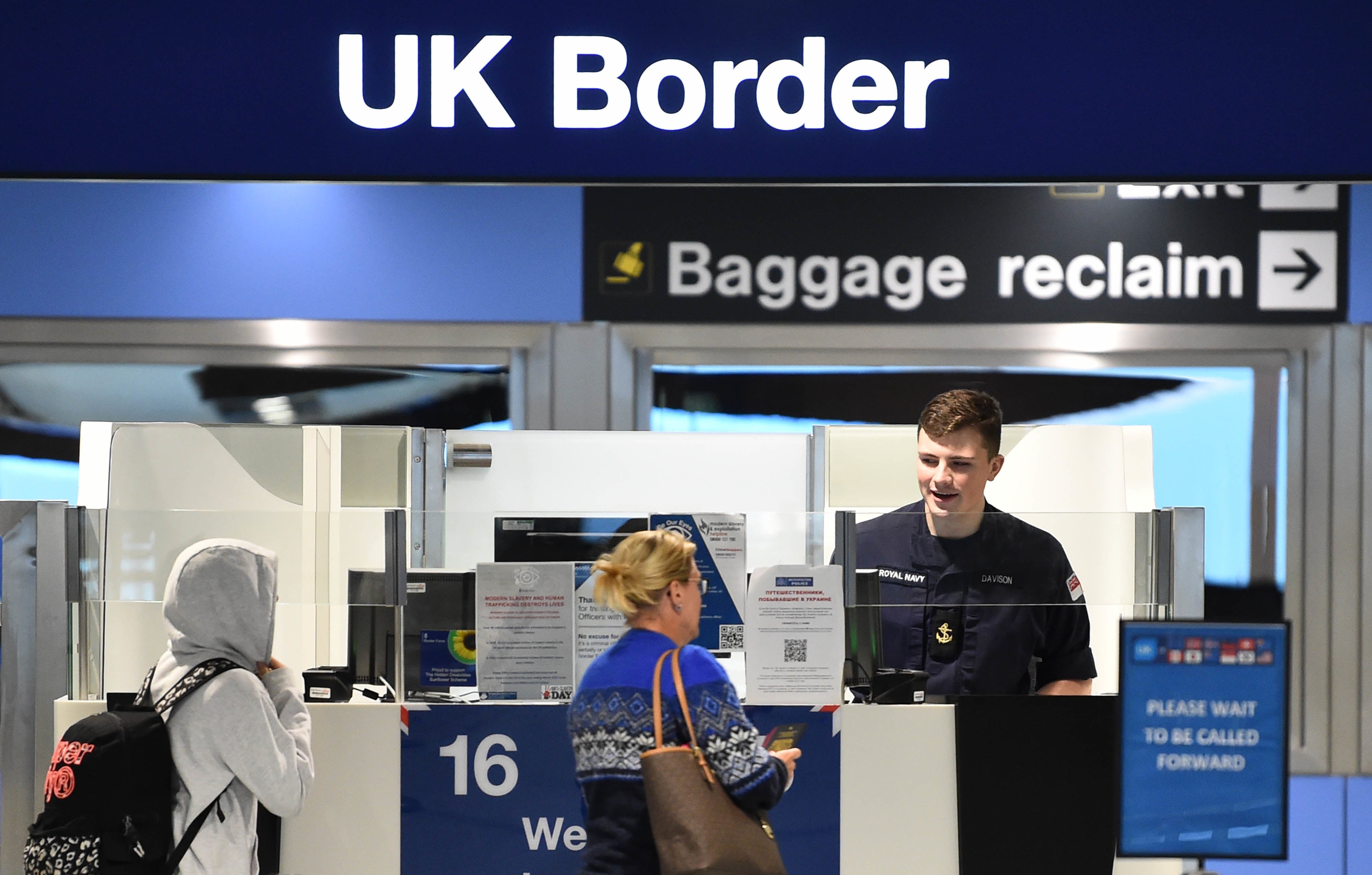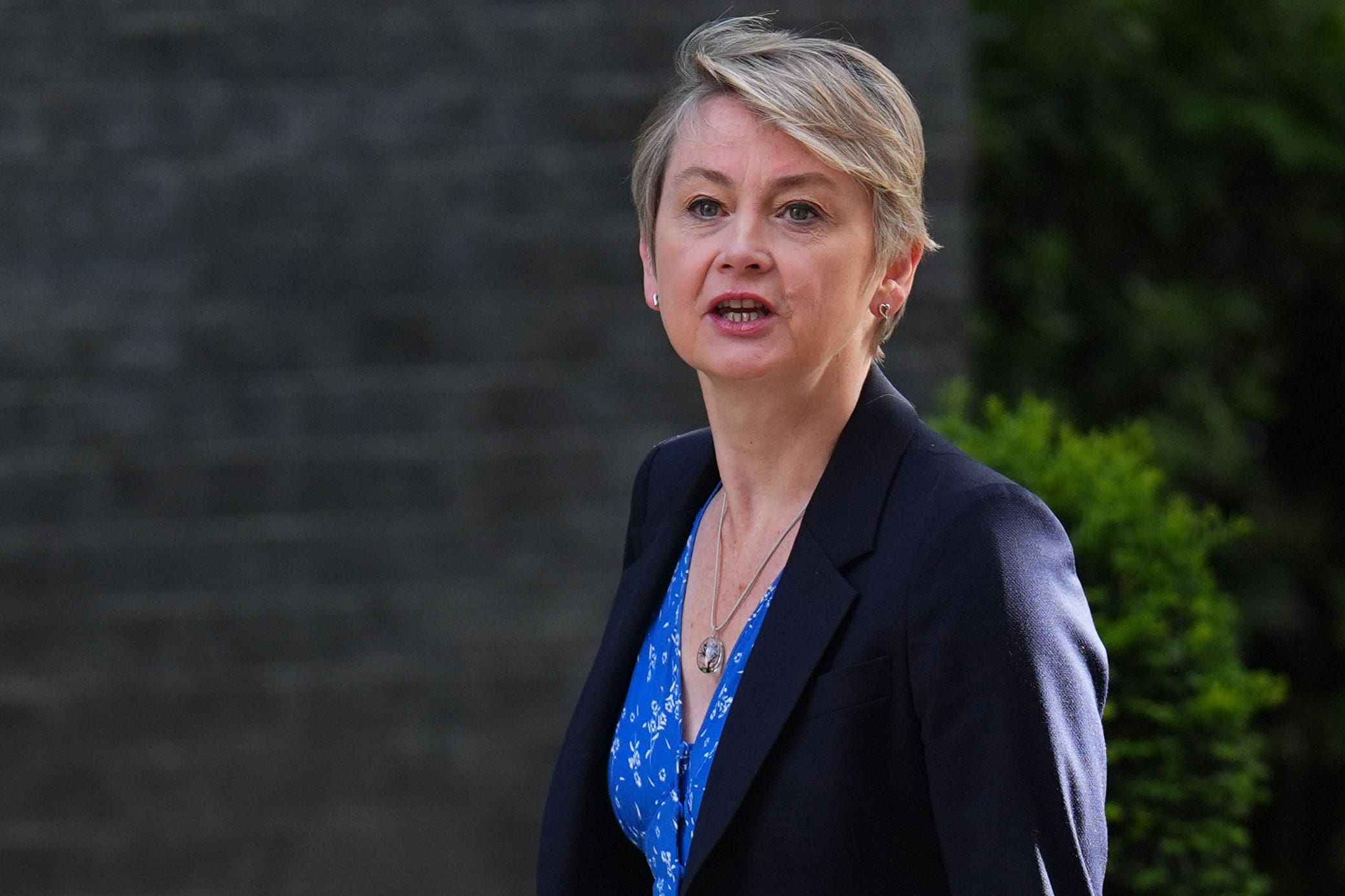Net migration falls after reaching record high of 900,000 in 2023
Net migration hit a higher than previously thought record of 906,000 last year, after figures were revised upwards by more than 150,000

Your support helps us to tell the story
From reproductive rights to climate change to Big Tech, The Independent is on the ground when the story is developing. Whether it's investigating the financials of Elon Musk's pro-Trump PAC or producing our latest documentary, 'The A Word', which shines a light on the American women fighting for reproductive rights, we know how important it is to parse out the facts from the messaging.
At such a critical moment in US history, we need reporters on the ground. Your donation allows us to keep sending journalists to speak to both sides of the story.
The Independent is trusted by Americans across the entire political spectrum. And unlike many other quality news outlets, we choose not to lock Americans out of our reporting and analysis with paywalls. We believe quality journalism should be available to everyone, paid for by those who can afford it.
Your support makes all the difference.Net migration to the UK has fallen this year, after reaching a record high of more than 900,000 in 2023 - 166,000 more than previously thought.
It fell to 728,000 in the year to June 2024, a decline of 20 per cent. But this came after net migration figures for the year to June 2023 were revised upwards to 906,000 from the initial estimate of 740,000, provisional data from the Office for National Statistics (ONS) indicates.
A similar change was made for the year to December 2023, which was initially estimated to be 685,000, and is now thought to be 866,000 – an increase of 181,000.
The figures, covering the previous Conservative government’s administration prior to the general election, come as new Tory leader Kemi Badenoch admitted her party had failed on migration.
In a speech on Wednesday, she said there had been a “collective failure of political leaders from all parties over decades” to grasp the issue, adding: “On behalf of the Conservative Party, it is right that I as the new leader accept responsibility, and say truthfully we got this wrong.”
The prime minister’s official spokesperson accused the previous government of having “effectively run Britain as an experiment in open borders”, saying the record high is a result of “policies and decisions taken by the last government”.
“This government has been elected on a mandate to change the country and put the people’s priorities at the heart of delivery, and that means bringing down these record high levels of legal migration and tackling the root causes behind it”, he added.

The ONS said that while remaining high by historic standards, net migration is now beginning to fall.
The organisation’s director, Mary Gregory, said the decrease in this year’s figures came as a result of a fall in the numbers of dependants on study visas coming from outside the EU, a decrease in the number of people arriving for work-related reasons, and increases in emigration.
At the end of 2023, the previous Tory government announced an increase to the minimum earning threshold for overseas workers by nearly 50 per cent from its current position of £26,200 to £38,700, as well as ending the 20 per cent going-rate salary discount for shortage occupations.
Meanwhile, changes to the student visa route restricted the ability of most international students to bring family members.
The estimates show that non-EU immigration of people arriving as dependants on study visa applications stood at 80,000 in the year to June 2024, down from 115,000 in the previous 12 months.
Last year’s figures were revised because the ONS now has more complete data for this period and has also improved how it estimates the migration behaviour of people arriving in the UK from outside the European Union.
The Tories have claimed credit for the fall in net migration with former home secretaries Suella Braverman and James Cleverly saying the changes the party introduced turned the tide.
Ms Braverman said: “A 20 per cent drop in immigration since June 2023 is a result of the changes I fought for and introduced in May 2023 as home secretary.
“That’s when we started to turn the tide. But 1.2 million arrivals a year is still too high. This is unsustainable and why we need radical change.”
Mr Cleverly added: “Today’s migration figures are the first to show the impact of the changes that I brought in as home secretary. Numbers are still too high, but we see the first significant downward trend in years. Changes that Labour opposed and haven’t fully implemented.”
And pre-empting the publication of Thursday’s figures, Ms Badenoch said: “No doubt the new government will try to take credit for that reduction. But that change is due to the reforms that the Conservatives made during our final months in power.”
Speaking alongside shadow immigration minister Chris Philp, she pledged to introduce a hard cap on the number of arrivals in the UK, and a “zero tolerance policy” for illegal migration.
“Millions want to come here, but we as politicians have to do right by the citizens of this country before anyone else,” the Tory leader said.
Ms Gregory said long-term international migration to the UK has been at unprecedented levels since 2021, driven by “a variety of factors, including the war in Ukraine and the effects of the post-Brexit immigration system”.
“Pent-up demand for study-related immigration because of travel restrictions during the coronavirus pandemic also had an impact”, she added.
Commenting on the latest figures, the ONS director said: “While remaining high by historic standards, net migration is now beginning to fall and is provisionally down 20 per cent in the 12 months to June 2024.
“Over that period we have seen a fall in immigration, driven by declining numbers of dependants on study visas coming from outside the EU.
“Over the first six months of 2024, we are also seeing decreases in the number of people arriving for work-related reasons. This is partly related to policy changes earlier this year and is consistent with visa data published by Home Office.
“We are also starting to see increases in emigration, most notably for those who came to the UK on study-related visas. This is likely to be a consequence of the higher numbers of students coming to the UK post-pandemic who are now reaching the end of their courses.”
Meanwhile, Marley Morris, the Institute for Public Policy Research’s associate director for migration, said the revised peak of 900,000 means the new Labour government faces “a tough set of choices on immigration”.
“Further cuts to numbers could be challenging for recruitment in key sectors such as social care, as well as university finances. It will need a clear framework to work through these choices and manage the potential impacts.”
Join our commenting forum
Join thought-provoking conversations, follow other Independent readers and see their replies
Comments